Design Considerations for Covers
Before you start creating covers for your PDF outputs, it is a good idea to plan your cover designs. For that, you need to understand:
What types of content you can add to each cover
Where you add the different types of content
Where you style the different types of content.
You will also need to consider the positioning of the various parts of a cover, so that they don't overlap and there is sufficient space for any translated text (see Spacing for Covers.)
We have included an example of each side of a cover. Use the examples to help you plan your own designs. When you are ready to start creating your cover, see Create a Cover.
Front Cover Recto Example
The front cover recto is the outside of the front cover. Traditionally, this is where you have the title of the document and you may have images and other information too.
Here is an example of a cover that uses content from a publication topic, PDF Layout, and a cover component. For each part, we have explained where the content comes from so that you can use a similar approach for your own designs.
 |
Logo
Use the PDF Layout settings to add a logo image to the front cover and control its positioning (see Logo on Cover).
Content box
This is a box that is absolutely positioned on the cover. Its content comes from a cover component, which is a special type of "container", similar to a topic. You can add many types of content to a cover component, including paragraphs, images and tables.
To learn how to set up a front cover content box, see Cover Components.
Language list
A list of the languages included in the document.
To learn how to set up a language list, see Set Up a Language List (PDF).
Foreground image or "product image"
The front cover recto can have one foreground image, also called a product image. You can add it from the PDF Layout or you can insert an image in the publication topic and give it the
roleattribute with a value oftitleimage. If you need more images, you can add them inside a content box (see point 2).To learn more, see Cover Foreground Images.
Background image or color
A background image for the page. In the example shown, the background image is A4 sized and is a single image made up of a white band in the upper section, an image of sky, and a white band in the lower section.
You can set the background image in a PDF layout, a publication topic, or a cover component. You can also set a background color for the entire cover and a content box. To learn how to set up backgrounds, see Cover Background.
Title block
The title block is a container for the title and subtitle. The subtitle is optional. You define the content for the title and the subtitle in a publication topic. Use the PDF layout to style and position the titles.
To learn how to set up the title block, title, and subtitle, see Cover Title and Subtitle.
Info elements from the publication topic
There are various "info elements" that you can include in a publication topic. Use the PDF Layout settings to control which side of the cover the "info elements" should appear on. Note that if there is not enough space for the info elements to fit on the preferred side, they will overflow on to the next page.
To learn about adding, styling and positioning info elements, see Info Elements for Covers.
Note
You can also have a languages list on the front cover, if you are publishing a multi-language document. For details, see Set Up a Language List (PDF).
When planning the design for your front cover recto, consider which parts you want to include. You can add or remove "info elements" from the Publication topic, and background images, product images, and a logo are optional. You only need to set up cover components if you want a back cover or if you want to add additional content to any of the covers.
We usually recommend that you set up a cover component for each side of your cover. Cover components allow you to have a back cover and give you more options for your designs. But you can create simple covers without them if you prefer.
Front Cover Verso Example
We call the reverse side of a front cover the "front cover verso".
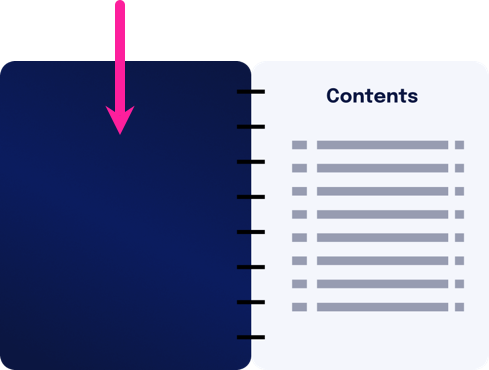
The front cover verso can contain content that comes from a publication topic, PDF Layout, or a cover component. Here is an example:
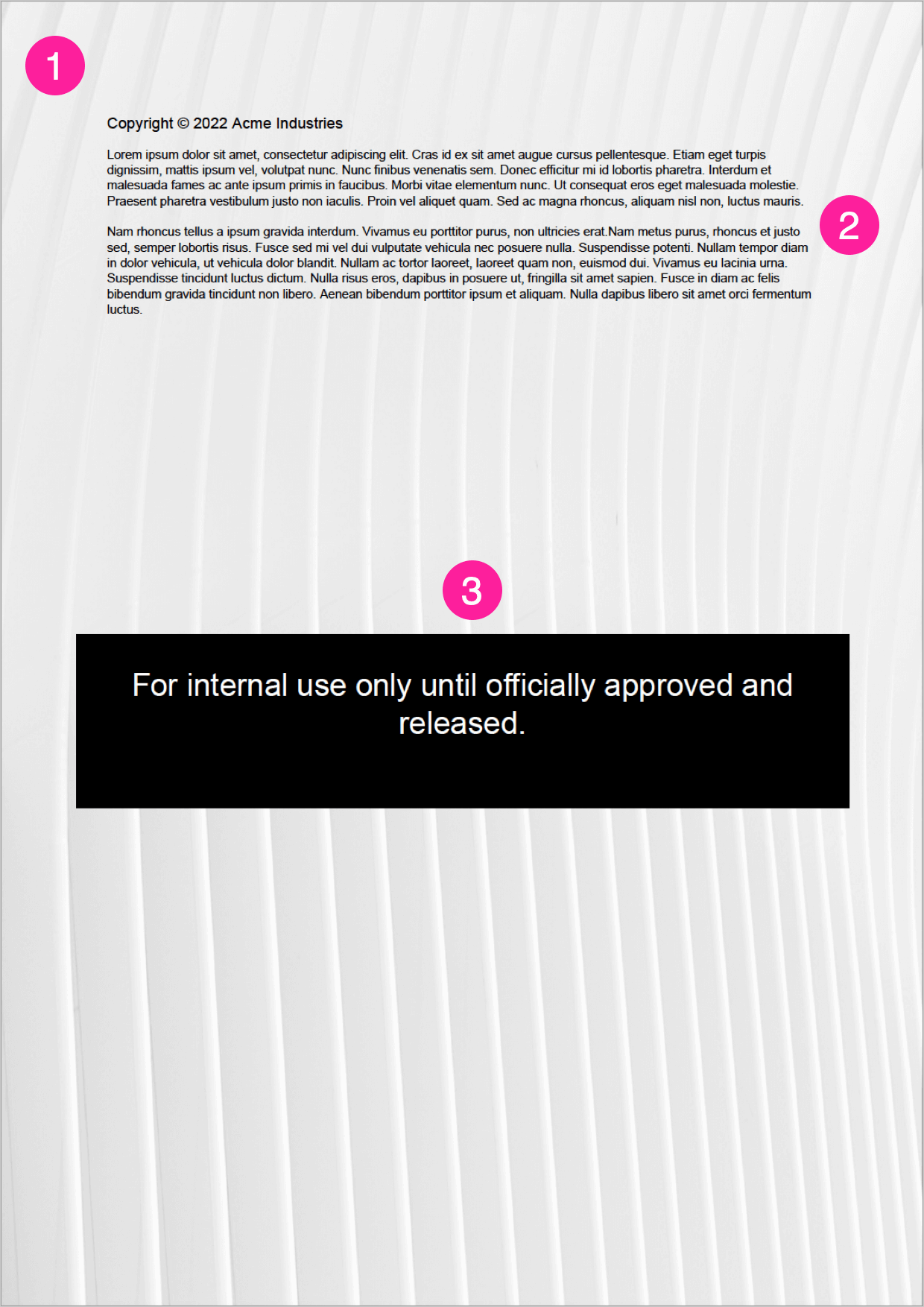 |
Background image or color
A background image for the page. In the example shown, the background image is A4 sized and shows an abstract pattern.
You can set the background image in a PDF layout, a publication topic, or a cover component. You can also set a background color for the entire cover and a content box. To learn how to set up backgrounds, see Cover Background.
Info elements from the publication topic
There are various "info elements" that you can include in a publication topic. Use the PDF Layout settings to control which side of the cover the "info elements" should appear on. Note that if there is not enough space for the info elements to fit on the preferred side, they will overflow on to the next page.
To learn about adding, styling and positioning info elements, see Info Elements for Covers.
Content box
This is a box that is absolutely positioned on the cover. Its content comes from a cover component, which is a special type of "container", similar to a topic. You can add many types of content to a cover component, including paragraphs, images and tables.
To learn how to set up a front cover content box, see Cover Components.
As with the front cover recto, you can choose to have no background image or color and the content box is optional. You can control which "info elements" are included by editing the publication topic and using the PDF Layout settings.
Back Cover Recto Example
The inside of the back cover is called the "back cover recto". This is the page that faces the last page of your document.
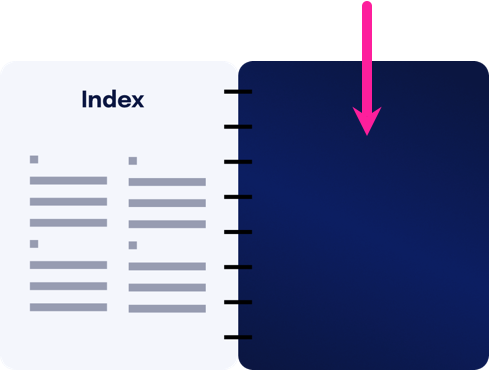
Note
To add a back cover to a PDF output, use cover components. Paligo will not include a back cover unless there are back cover components in place in your publication topic.
The back cover recto can contain content a background image and additional content in a cover component. Here is an example:
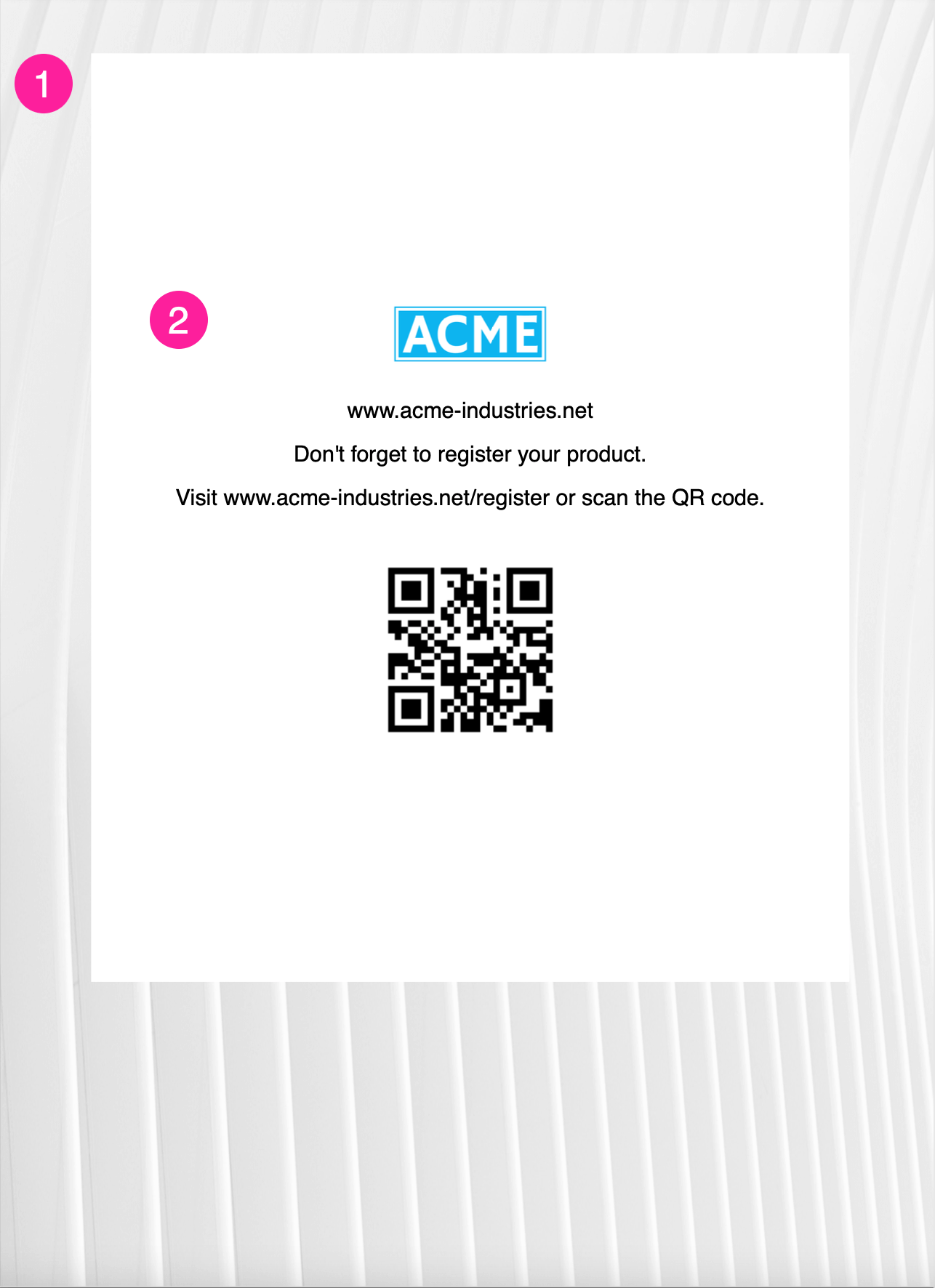 |
Background image or color
A background image for the page. In the example shown, the background image is A4 sized and is an abstract pattern.
You can set the background image in a PDF layout or a cover component. You can also set a background color for the entire cover and a content box. To learn how to set up backgrounds, see Cover Background.
Content box
This is a box that is absolutely positioned on the cover. Its content comes from a cover component, which is a special type of "container", similar to a topic. You can add many types of content to a cover component, including paragraphs, images and tables.
To learn how to set up a front cover content box, see Cover Components.
The background image or color is optional, but you must have a cover component if you want Paligo to create a back cover.
Back Cover Verso Example
We call the outer side of the back cover the "back cover verso".

Note
To add a back cover to a PDF output, use cover components. Paligo will not include a back cover unless there are back cover components in place in your publication topic.
The back cover verso can contain a background image and additional content that comes from a cover component. Here is an example:
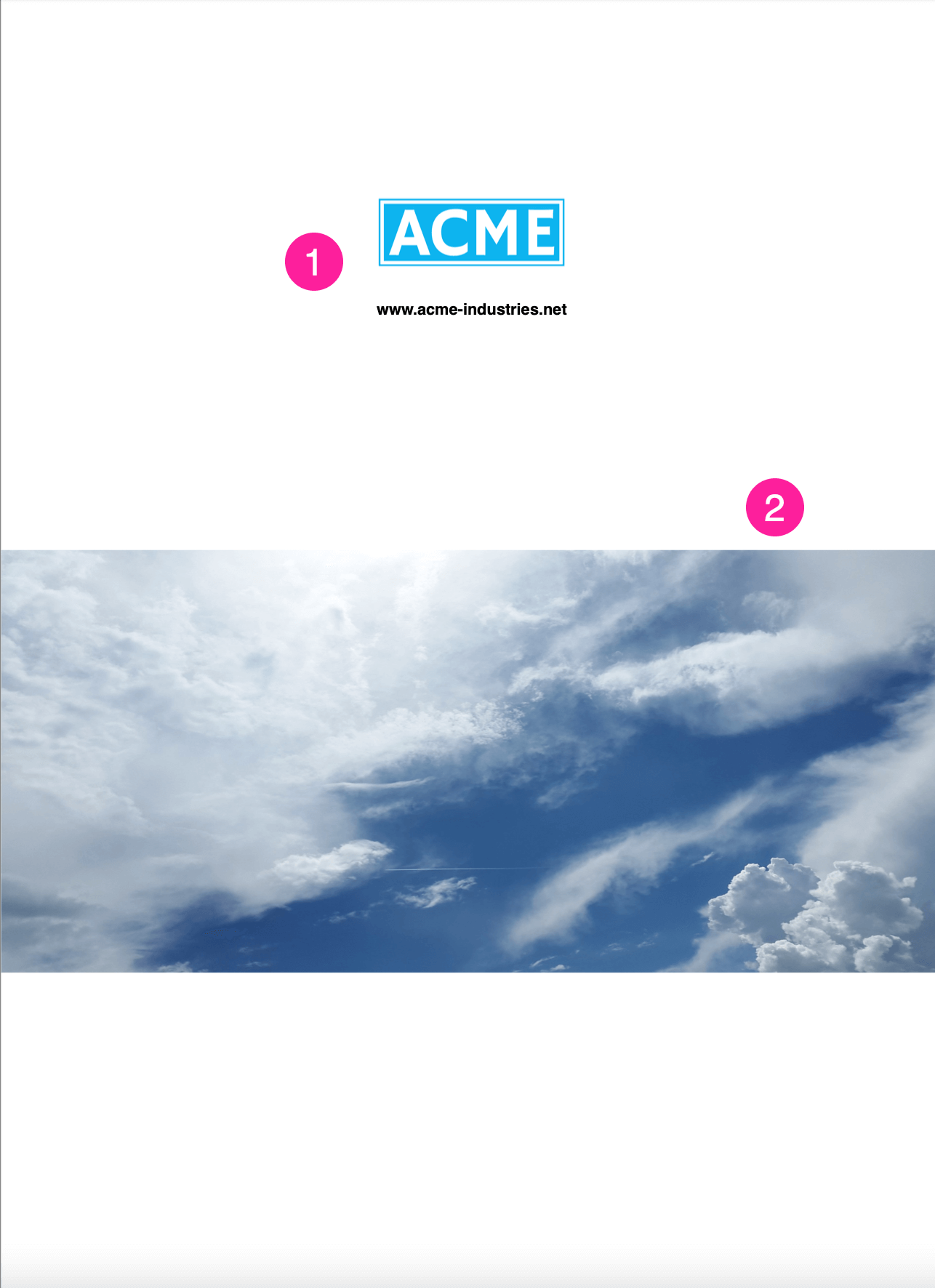
Content box
This is a box that is absolutely positioned on the cover. Its content comes from a cover component, which is a special type of "container", similar to a topic. You can add many types of content to a cover component, including paragraphs, images and tables.
To learn how to set up a front cover content box, see Cover Components.
Background image or color
A background image for the page. In the example shown, the background image is A4 sized and is an abstract pattern.
You can set the background image in a PDF layout or a cover component. You can also set a background color for the entire cover and a content box. To learn how to set up backgrounds, see Cover Background.
The background image or color is optional, but you must have a cover component if you want Paligo to create a back cover.
Spacing for Covers
When planning your design, you need to think about the spacing. This is especially true for the front cover, as it can have content from the publication topic, the PDF Layout, and a cover component. If the spacing is inappropriate, it is possible that some of the content will overlap.
The main factors to consider are:
Allow enough space for all parts of the cover, including any "info elements" and content in a cover component.
Give text extra space if your content is going to be translated. Translated text may be longer in other languages and so requires more space.
Make sure the background image has low-contrast or blank areas where the text will appear. It is important that your text is easy to read against the background.
Be aware of the cover margins (see Understanding the Front Cover Margins).
The PDF Layout has various settings for changing the positioning of cover elements.